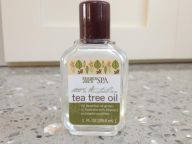
We are having a beautiful summer in Massachusetts – clear blue skies, dry air, not too hot. Ideal, but we need some rain! Though we have had some rain the past few days, we haven’t had nearly enough. Several towns are facing mandatory water restrictions and many have voluntary water bans from the Department of Environmental Protection. Much of the Northeast, parts of the Southeast, and scattered areas in the Midwest are abnormally dry. The West continues to be in serious drought conditions. Conserving water is a must!
Here are two major areas where you can conserve water.
Watering Your Lawn
A lush green lawn is lovely, but turf grass is our largest irrigated “crop”, using as much as half of all fresh water used in urban areas each year. Typically, at least half of all water consumed by households is used outdoors. Lawns require two-and-a-half to four times more water than trees and shrubs, and a typical suburban lawn uses 10,000 gallons of water over and above that provided by rainfall in a single year. Wow! Here are a few suggestions to conserve water with your lawn.
- Mow high. Longer grass encourages longer roots, which require less water and food. It also holds moisture better.
- Avoid mowing during the hottest part of the day.
- Don’t mow if you don’t have to. Save the gas instead.
- When you do water, water deeply and infrequently.
- Water between 4 and 6am when the demand is low. After 10 am much of the water evaporates.
- Check your automatic sprinkler system periodically to make sure the heads are actually watering the lawn and not the sidewalk or your house.
- Since there seems to be a trend towards hot, dry summers, consider re-landscaping to minimize grass areas in your lawn, lowering your demand for water. Think about “Edible Landscapes” – they make good sense!
- If you can, let your lawn go dormant during this drought period. Lawns are supposed to go dormant in the summer – we just keep them artificially green by watering. If your lawn has a good root system established, it won’t die and will bounce back during the cooler temperatures of fall.
Washing Your Car
When we wash our car at home, try to avoid washing near the storm drain. Water run off goes right into storm drains and eventually into rivers, streams, creeks and wetlands. You can cover the drain with a rubber mat or wash the car on grass or gravel and let water seep into the ground. If you do this, make sure to use non-toxic, biodegradable detergents.
To cut down on the amount of water you use when washing your car, try rinsing with rainwater collected in a bucket or rain barrel. Use a bucket instead of a hose for washing and use the hose only on the final rinse.
Other Ideas
Turning the water off when you brush your teeth or shave, running the dishwasher and washing machine only when full, shortening your shower are a few other easy ways to save water. Click here for more ideas.
Water is a precious resource – let’s all do what we can to conserve!
For more green living tips, visit greenwithbetsy.com.

 , an online newspaper that encourages readers to take part and take action and is one of a series on
, an online newspaper that encourages readers to take part and take action and is one of a series on 
 Have you ever heard of Preserve recycled toothbrushes? I’ve been using them for years and wouldn’t use any other kind. Not only are they made from recycled yogurt cups (the bristles are new!), but Preserve worked closely with dental professionals to develop a toothbrush with an ergonomic handle for hard-to-reach places and a three-level bristle arrangement for thorough cleaning. Unlike most toothbrushes, Preserve’s minimize your impact on the environment.
Have you ever heard of Preserve recycled toothbrushes? I’ve been using them for years and wouldn’t use any other kind. Not only are they made from recycled yogurt cups (the bristles are new!), but Preserve worked closely with dental professionals to develop a toothbrush with an ergonomic handle for hard-to-reach places and a three-level bristle arrangement for thorough cleaning. Unlike most toothbrushes, Preserve’s minimize your impact on the environment.
 are placed at 250 Whole Food locations across the county where anyone can drop of #5 plastics including caps from Plum Organics and other similar products, which so often don’t make it into the recycling stream. Or you can take advantage of their mail back programs.
are placed at 250 Whole Food locations across the county where anyone can drop of #5 plastics including caps from Plum Organics and other similar products, which so often don’t make it into the recycling stream. Or you can take advantage of their mail back programs.



